Feminist Movement or Marvel Fluff: The History of She-Hulk
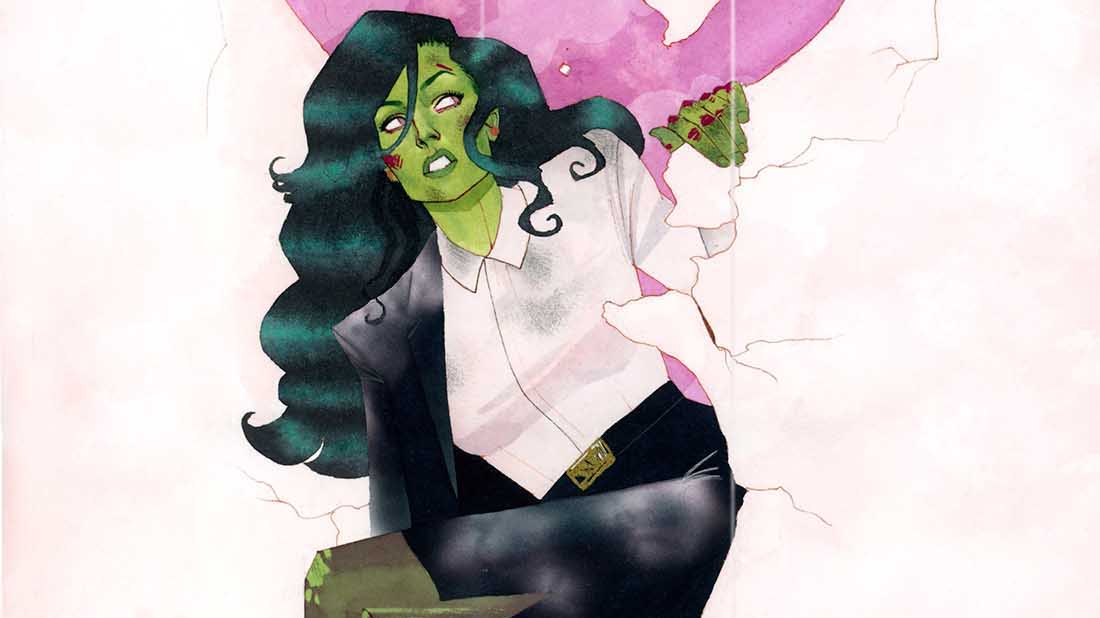
We’ve all heard the story. Not-so-famed physicist Bruce Banner developed an experimental Gamma Bomb for the military. During a test of the bomb, his friend unknowingly walked into the test area just before the bomb was set to explode. Wanting to save him from certain doom, Bruce lept into the field and pushed his friend from harm. Unfortunately, Bruce was unable to escape the blast and as a consequence, was bombarded by Gamma Radiation. The radiation activated a change in him and from this point forward, he changed into a giant green rage monster each time he became angry.
The Incredible Hulk is one of Marvel Comics’ premiere superheroes. He first debuted in The Incredible Hulk #1 back in May of 1962 and was created by Stan Lee and Jack Kirby. Since his creation, he has been a part of more superhero teams that I have fingers to count on, has been replicated over and over in the interest of profits, and is the definition of the words super strength. The Incredible Hulk is one of the most important superheroes to come out of the Silver Age of Comics…
…which is why when Marvel Comics wanted to create a female version of the character, it came as little surprise. Many questions followed. How could they do it? What would be her backstory? And would she be readily accepted by readers?
The 1970s were an interesting decade for Marvel Comics. The publisher had just left the very successful 1960s and found themselves in a period of change. Readers who had grown up on stories of superheroes continually thwarting supervillains were no longer interested in such simple tales. Instead, they began to crave more complex and non-traditional books. This, of course, was in alignment with what was happening in society. Those once kids who had grown up on campy comics wanted, no, demanded more from their favorite publishers.
And in their list of demands stood:
- Darker themes
- More violence
- Blood
- Real world relation
And the number one selling offering of all time, sex.
Readers wanted sex. They wanted sexier superheroes, sexier stories, and very little left to the imagination.
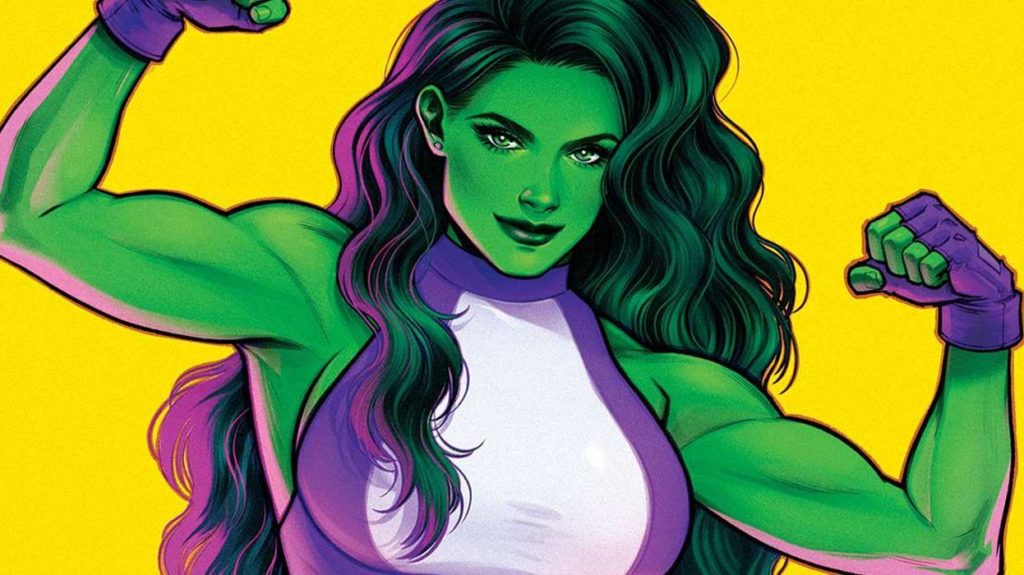
For the time period, this meant tight-fitting clothes (if any at all), big breasts, overly sexualized predicaments, and slender, hourglass-shaped figures. Moving forward, superheroines (if they hadn’t already been created), fit the above archetype. Even the ones that had come from decades previous began to change to better reflect what the reader wanted. With this knowledge, the duo charged with introducing the history of She-Hulk (Stan Lee and John Buscema) had the perfect formula to create. So, they went to work.
The history of She-Hulk started as the history of Jennifer Walters. She-Hulk is actually Jennifer Walters and Jennifer Walters was born to a Los Angeles County sheriff by the name William Walters and his wife Elaine Walters. Tragedy struck the Walters household when Jennifer was just 17. At this time, Elaine was killed in an unfortunate accident. This fuelled Jennifer and as a result, she finished school and became a successful attorney.
However, no matter her success she was once again met with tragedy.
Nicolas Trask (a local crime lord) marked Jennifer as his next target. He did this because her father had caused him a great deal of trouble throughout his criminal career. As a result, he thought that getting back at him through Jennifer was where he was able to inflict the most pain. With Jennifer as his target, he set out to find her. Once found, he shot her. Luck was in her side, however, as also in Los Angeles was her perfect blood match, Bruce Banner.
And why was he there?
Simple.
The military and law understood that Bruce and the Hulk were one in the same. Because Jennifer is a highly respected lawyer, he came to Los Angeles to get her help in proving that because he doesn’t control the Hulk, he should not be responsible for his actions as the Hulk.
Now at the hospital, she learned that she needed a blood transfusion to save her life. Bruce knew that he was a match but was initially reluctant for he feared what his radiated blood might do to her. He also knew that he had little time to waste. After quickly considering his choices, he gave her the transfusion. Although the transfusion worked, it had a small side effect. Like him, she was suddenly able to turn into a giant green rage monster. However, unlike him, she eventually learned to keep most of her intelligence and emotions under control after transforming. Thus began the long history of She-Hulk.
As someone similar to The Incredible Hulk, She-Hulk possesses many of the same superpowers. Like him, she’s empowered with superhuman strength, durability, and stamina. When it comes to her superhuman strength, she isn’t just really strong. Instead, she’s on the same strength level as some of the strongest characters in Marvel…Thor, Colossus, and Mephisto to name a few. She also has a degree of telepathic immunity that’s so advanced she has been able to resist Professor Xavier. In addition, she has a small level of healing and regeneration. This means that she can rapidly heal from nearly any injury she sustains. Finally, She-Hulk is able to leap tall buildings and more. In fact, of her more impressive leaps, she has caught airplanes from the sky in a single bound.
You may be asking yourself how she differs from her famous cousin?
Different from him, She-Hulk is able to swap her powers and body with other female humans. This means that she can give her powers to another all the while talking on that form. In principle, this may seem like a neat ability. In practicality, it isn’t all it’s cracked up to be.
Here’s why.
When she does this, her actual body is left both powerless and green. This means that her body still appears in She-Hulk form but doesn’t have her She-Hulk abilities. Roughly translated…she’s left defenseless should somebody with evil intentions come across her body.
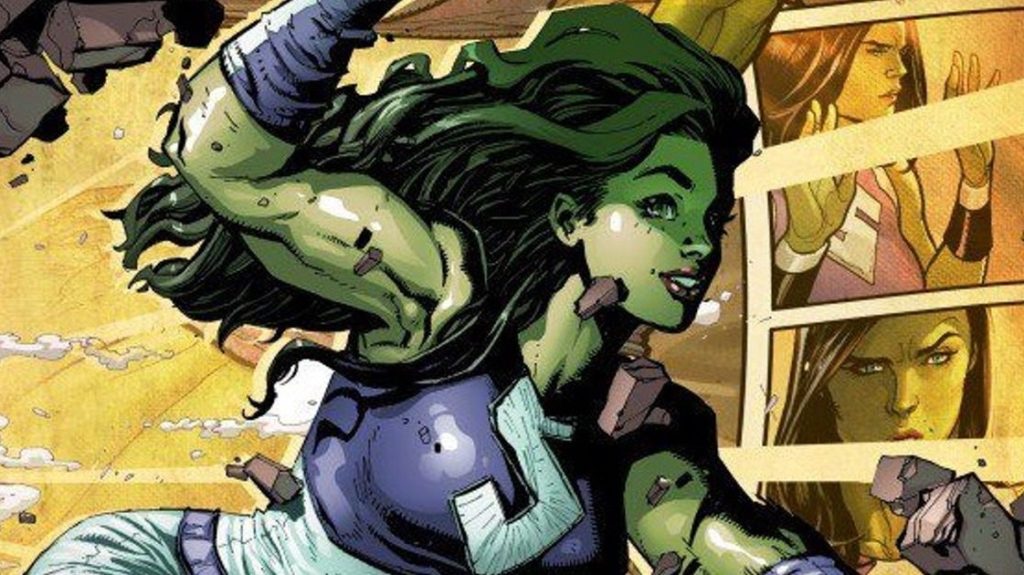
When Marvel began the history of She-Hulk, they knew they had someone special. With her, they were able to tap into a segment of the market that had historically gone untapped…the slowly rising female section of the market.
Let me explain.
The 1960s and more so the 1970s was a period chalked full of change. The 1970s was a period that has now been defined as the second wave of feminism. This era was marked by a much-needed transformational change in both the U.S. constitution and how women were perceived in society.
The Equal Rights Amendment (ERA) was originally introduced to Congress in 1923. It stated that “equality of rights under the law shall not be denied or abridged by the United States or by any State on account of sex…”. Although the ERA never made its way to the House or Senate Floor, it did lay the groundwork of what was to come.
By 1966, The National Organization for Women was founded, and on its radar was the ERA. The group began to advocate for the same things many groups are still advocating for today…equal rights. It began to lobby for the ERA and prioritized passing what it stood for through the Constitution. Although numerous attempts at this had been made by this point, none of them were successful.
The ERA, however, didn’t come without its fair share of detractors. While women from middle-class households were largely in favor of it, many working-class women weren’t. They were concerned that those who were working needed some degree of protection against things like hours worked and the overall condition of the working environment.
This aside, the ERA continued to gain the support necessary and by the early 1970s, it was approved by the U.S. House of Representatives. As the ERA and what it stood for gained traction, the number of ratifications required to pass it as a law increased. In fact, by 1979 it had received 35 of the necessary 38 state ratifications. With widespread support, it looked as though the ERA was finally set to make its long and overdue appearance under the U.S. Constitution.
Or so it appeared.
Many groups began to speak up against the ERA. They argued that if it were passed, many of the gender-specific rights that women had would be taken away. This meant that things like alimony and child support would disappear. It meant that women could be drafted into the military and that protections given by the labor laws would disappear. It was also argued that it would give way to the removal of benefits given to women under the Social Security umbrella. Over time this caused many of the states who voted in favor, to either change their vote or express a desire to do so.
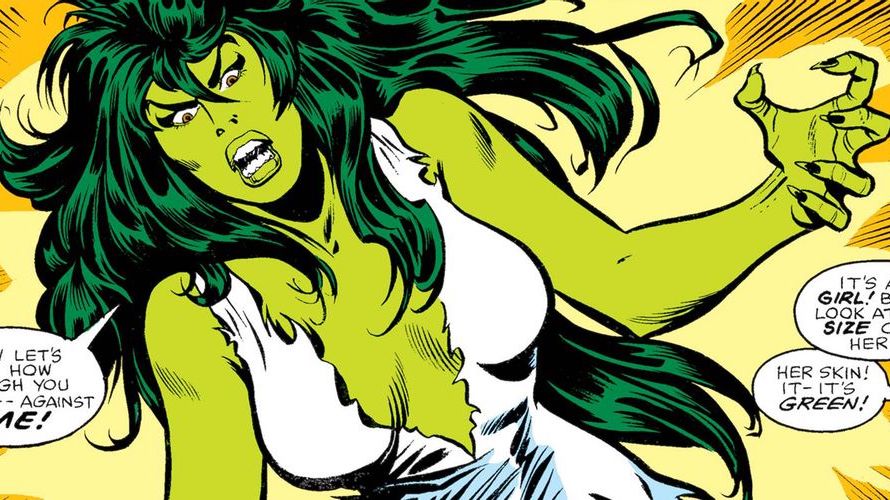
This movement caused a ripple effect heard in many different mediums and markets. This included comic books. Heroes like Invisible Woman, Jean Grey, and Wonder Woman became a beacon of change for the industry. So, when Marvel began the history of She-Hulk it only made sense that she too would be a beacon of change. Unfortunately, this isn’t exactly what happened.
Two of the biggest issues facing comic books at the time was that they were A) predominantly written by males and B) predominantly read by males.
Weezi: “I know all that, Jen. But what about your female readership? Isn’t this the book that wives and girlfriends say they love to read…even if they don’t normally read any other comics at all?”
She-Hulk: “Sure! But most of my audience is male. And, let’s face it, Louise! We all know the only thing they’re really interested in is the size of my…”
Plainly put, She-Hulk was created by men, for men. Like the Hulk, her transformation left her with tattered clothes. Unlike the Hulk whose was still given pants to wear, her outfit was something more in line with what a lingerie model would wear down the runway…and then it was tattered. The rips across her chest were strategically placed so as to cover just enough of her, ummmm, physicality. Worse yet, not only did she not have pants, but her shirt was left just long enough that it wouldn’t stay down should a wind of 5 kilometers an hour blow by.
She was skinny, sexy, and as a result, instantly caught the attention of male readers. Even David Goyer (superhero movie screenwriter) has infamously said “The Hulk was this classic male power fantasy. It’s like, most of the people reading comic books were these people like me who were just these little kids getting the s— kicked out of them every day…She-Hulk was the extension of the male power fantasy. So it’s like if I’m going to be this geek who becomes the Hulk then let’s create a giant green porn star.” As a consequence of thoughts like this, she became just another character used as a catalyst to fuel male fantasy. Heck, she didn’t even have a superhero uniform for the first many issues of her debut series.
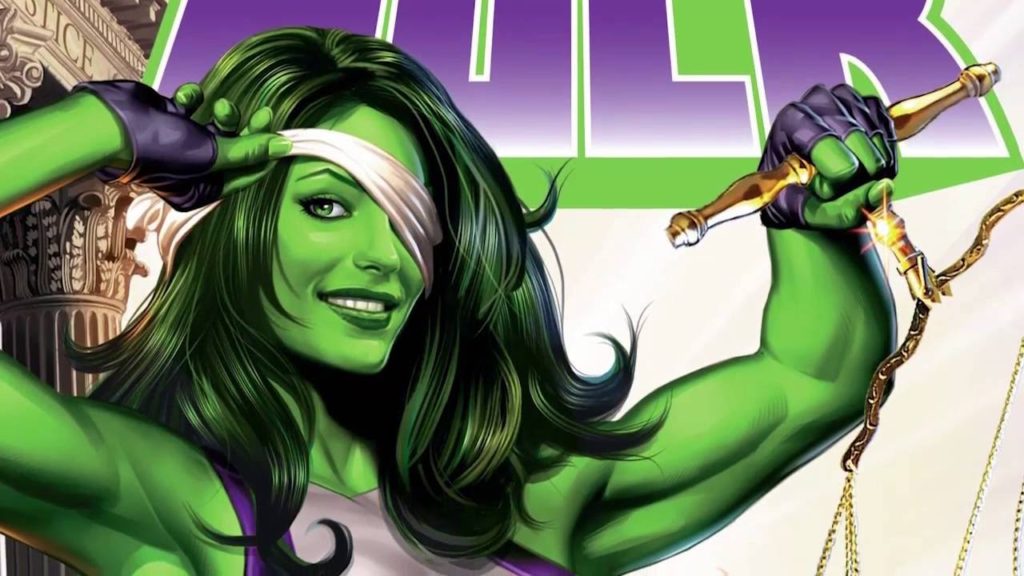
Jennifer Walters was a character designed to sell books and the writers knew it. So, they used whatever sexual advantage they could to do it.
- Bikini and beach ball comic cover – check
- Nude character only covered up by a newspaper – check
- Superheroine taken captive by villain while only wearing a bathing suit – check
- Various panels inside books of changing clothes – check
- Shower scenes – check
And the most unbelievable of all…a solid six, yes I said six, pages of jumping rope while appearing completely naked. Check.
It should be noted that she wasn’t actually naked and had a white bikini on underneath. However, the idea was there…naked female characters give rise (pun intended) to male purchases. Even if only an ill-conceived joke, spending six pages on something as tasteless as this is inexcusable. Jennifer Walters had quickly become the comic book version of a Maxim magazine…the ultimate male fantasy magazine while I was a young man. Although the magazine (Maxim) certainly had its fair share of good articles, it shamelessly exploited sex.
She-Hulk was created to be Marvel’s Bionic Woman. She was created to prove that female superheroes are just as strong and able as their male counterparts. Sadly, she became a way to increase the already high male readership.
Or did she.
There is an avenue of thought that all the erotic positions and panels she was placed in, actually helped to solidify her stance as a feminist hero.
Let me explain.
The history of She-Hulk began inside the pages of Savage She-Hulk #1. The cover image depicted her as an angry green behemoth looking to reign down terror on all who oppose her. In front of her stands Jennifer Walters, dainty and clad in the clothes of the time period. You wouldn’t know that the two were one and the same based on She-Hulk’s expression. She looks, similar to that of her cousin, angry. She looks unhinged and ready to explode. In an era (and even to this day), that places a strong emphasis on the ideal woman, this seems out of place. This woman is not prim, proper, nor is she one who patiently and quietly stands behind a man. Instead, this woman looks nothing like the societal expectations that were unjustly laid upon her.
Where the cover transitions into change are through the background characters. If you look closely, there are men on the cover cowering in fear…and rightfully so. She-Hulk had arrived and she was set to undo everything that had come before her.
This version of She-Hulk epitomized the “savage” title that accompanied her. This version that started the history of She-Hulk wouldn’t last long.
Almost by design, She-Hulk quickly became a rallying point for the feminist movement that continues to this day. As one of the first comic characters to break the fourth wall (recognize they are a comic character and speak to the reader), She-Hulk mocked the world both outside and around her.
Even her infamous jump rope issue that I spoke of earlier makes a mockery of the reader. For six pages she let on that she was naked underneath the cleverly drawn action lines caused by the rope. She took shots at the Comics Code Authority, Tom DeFalco, Better Business Bureau, as well as all those who were “dopey enough” to think she was actually naked. This well-thought-out sequence announced her arrival as a player in comic books.
The history of She-Hulk and what she did challenged social norms of the time all the while giving rise to a new age of female superheroes. This age, unlike the one before it, included female superheroes unafraid to speak their minds, challenge the status quo, and walk a brighter and better path.
Look no further than John Byrne’s run on Sensational She-Hulk.
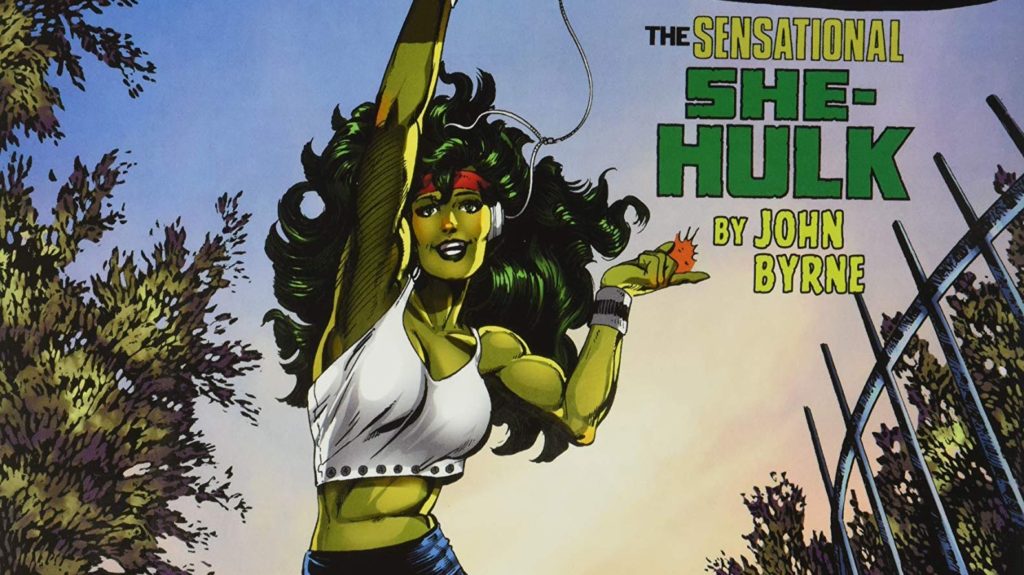
His run (which included the jump rope sequence) is the run that laid the groundwork for what her character was to become. Rather than an angst-filled carbon copy of her cousin, this She-Hulk was a character more accepting of her superhero identity. In fact, this run is where she rarely, if ever, transformed back into Jennifer Walters. She was a female superhero and proud of it. She wasn’t going to stand behind the trope of what a female superhero was. Nor was she going to let others define who she was meant to be. It may seem inconsequential, however, this change to her character went a long way to ushering in a new age of female heroes. This, for all intents and purposes, mirrored exactly what was happening in the real world. Jennifer, like the ERA and other organizations tired of social norms set by men, was a catalyst for much-needed change.
Or was she?
What do you think? Was she a catalyst for change or does the history of She-Hulk show that she was just another superhero?
As I do with all of these in-depth articles, I’m going to leave you with this. Comic books are the gateway to understanding the world just a little bit better. So, may they be around forever.
Liked this article? Follow us on Facebook, Threads, and X to stay updated with the latest news.

